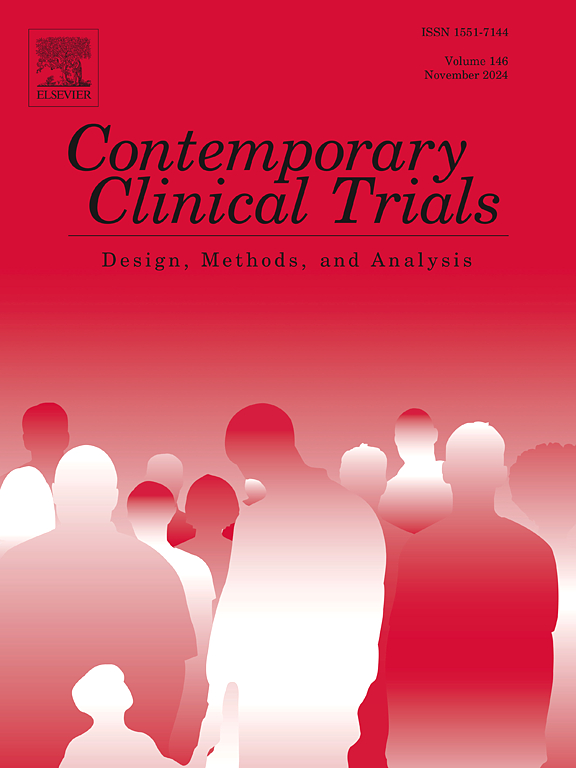Prehabilitation and rehabilitation in peripheral arterial disease: Protocol and study design of the PREPARE-IT trial
IF 1.9
3区 医学
Q3 MEDICINE, RESEARCH & EXPERIMENTAL
引用次数: 0
Abstract
Background
Both prehabilitation and rehabilitation programs have been shown to improve functional capabilities, surgical outcomes, and quality of life in patients with peripheral arterial disease (PAD). However, referral rates remain low, and the benefits of combined prehabilitation and rehabilitation for PAD have not been explored.
Methods
Three hundred patients with symptomatic claudication referred for femoral-popliteal endovascular stenting will be studied. In this randomized trial, the effectiveness of a 6-week pre-operative program of exercise therapy and risk management (prehabilitation) will be compared to: 1) a 6-week program of rehabilitation (post-operative); and 2) both prehabilitation and rehabilitation. Comparisons will be made of time to claudication symptoms, 6-min walk performance, peak VO2, strength, endothelial function, biomarkers, and quality of life at baseline, 6-weeks (1 week prior to intervention), 14 weeks, and 22 weeks.
Discussion
The concept of prehabilitation is based on the principle that patients with higher functional capabilities will better tolerate a surgical intervention and therefore exhibit better outcomes following the intervention. Recent studies have consistently demonstrated better functional, psychosocial, and surgery-related morbidity outcomes among subjects participating in pre-surgical prehabilitation programs, but few such data are available in patients with PAD. The prehabilitation period also provides an ideal opportunity for cardiometabolic risk intervention. The primary aim of this trial is to explore the functional and psychosocial impact of prehabilitation, rehabilitation, and their combination in patients with PAD scheduled for a non-emergent endovascular intervention. We anticipate that the combination of prehabilitation and rehabilitation will result in better outcomes than either intervention alone.
外周动脉疾病的预适应和康复:prep - it试验的方案和研究设计
研究背景:外周动脉疾病(PAD)患者的预适应和康复计划均可改善其功能、手术结果和生活质量。然而,转诊率仍然很低,并且PAD的联合预适应和康复的益处尚未被探索。方法对300例行股腘血管内支架植入术的跛行患者进行分析。在这项随机试验中,6周的术前运动治疗和风险管理(康复前)计划的有效性将与:1)6周的康复计划(术后);2)预适应和康复。将比较基线、6周(干预前1周)、14周和22周时的跛行症状、6分钟步行表现、峰值VO2、力量、内皮功能、生物标志物和生活质量。预康复的概念是基于这样一个原则,即功能能力较高的患者能够更好地耐受手术干预,因此在干预后表现出更好的结果。最近的研究一致表明,在参加术前康复计划的受试者中,功能、心理社会和手术相关的发病率结果更好,但在PAD患者中很少有这样的数据。康复期也为心脏代谢风险干预提供了理想的机会。本试验的主要目的是探讨预适应、康复及其联合治疗对非紧急血管内介入治疗的PAD患者的功能和心理社会影响。我们预计,与单独干预相比,预适应和康复相结合将产生更好的结果。
本文章由计算机程序翻译,如有差异,请以英文原文为准。
求助全文
约1分钟内获得全文
求助全文
来源期刊
CiteScore
3.70
自引率
4.50%
发文量
281
审稿时长
44 days
期刊介绍:
Contemporary Clinical Trials is an international peer reviewed journal that publishes manuscripts pertaining to all aspects of clinical trials, including, but not limited to, design, conduct, analysis, regulation and ethics. Manuscripts submitted should appeal to a readership drawn from disciplines including medicine, biostatistics, epidemiology, computer science, management science, behavioural science, pharmaceutical science, and bioethics. Full-length papers and short communications not exceeding 1,500 words, as well as systemic reviews of clinical trials and methodologies will be published. Perspectives/commentaries on current issues and the impact of clinical trials on the practice of medicine and health policy are also welcome.

 求助内容:
求助内容: 应助结果提醒方式:
应助结果提醒方式:


